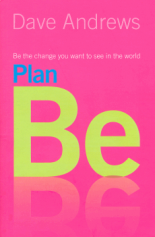Pete Seeger’s Songs Live On
Pete Seeger, the American troubadour, folk music singer and activist, has died at a hospital in New York. He was 94.His death was confirmed by his grandson, Kitama Cahill-Jackson, who said that the singer died on Monday night after six days in hospital.
The singer-songwriter inspired folk revival in the US and was blacklisted during McCarthy era for his leftwing views and lyrics.
Born in New York City into an artistic family, his mother, Constance, played violin and his father, Charles, a musicologist, was a consultant to the Resettlement Administration, which gave artists work during the Depression.
He first gained fame as a member of the Weavers in 1948, and the quartet went on to have hits with their versions of songs including Goodnight Irene. Later in the 1960s folk revival he performed with Bob Dylan and, more recently, with Bruce Springsteen. He performed and recorded for six decades and was still an activist: as recently as October 2011, he marched in New York City as part of the Occupy Wall Street protests; and he wrote to Russian president Vladimir Putin requesting the release of Captain Peter Willcox and the Arctic 30 in November 2013.
In the McCarthyite political climate of the 1950s, his leftist views got him blacklisted and he was kept off commercial television for over a decade. Summoned to give evidence about his political leanings and contacts to the House Un-American Activities Committee, Seeger refused to testify. This led to an indictment for contempt, a prison sentence and a travel ban. In America’s cold war blacklisting and red-baiting years, Seeger was unable to perform in many halls and was excluded from college campuses. All the while, though, he kept writing and singing.
He was onstage in January 2009 for a gala Washington concert two days before Barack Obama was inaugurated, and was due to receive an award that honours those who embody the spirit of his legendary folk contemporary Woody Guthrie during an event on 22 February at the Peter Norton Symphony Space in New York City.
Last year, Seeger performed at Farm Aid 2013, the annual benefit for America’s family farmers, alongside Willie Nelson and Neil Young.
Where Have All the Flowers Gone?
The most famous of the many great songs written by Seeger. He wrote it in the mid-1950s and it became such an instant standard that when the Kingston Trio recorded it in 1961 they thought it was a traditional song.Marlene Dietrich covered it to devastating effect, and it became indelibly associated with her, so much so that Seeger used to have to apologise for the throwaway manner in which he approached it. But it is worth listening to his wistful, unemotional delivery, more reciting than singing. And more in sorrow than in anger. This is simply the way the world is. The manner in which he calls on the audience to participate is telling, too. He wasn’t the star; the audience was. Music was a vehicle for mass expression. That helps to explain his opposition to Dylan’s new course. Confronted with a rock band, the audience were reduced to mere spectators, fans; Seeger wanted participants, activists, He wanted to change the world, not just entertain it. Pete Seeger/ Where Have All The Flowers Gone – YouTube
► 4:15► 4:15 www.youtube.com/watch?v=TXqTf8DU6a0 Jul 1, 2008 – Uploaded by jguth3
Michael Row The Boat Ashore
Politics, religion, suffering, the land: American folk music draws on many sources. Here, Seeger embraces the gospel tradition and leads the sort of singalong he adored. I have no idea whether he was a believer, but he was always more minister than musical star, eager to lead his congregation to the promised land. Pete Seeger – Michael Row The Boat Ashore – YouTube
► 3:33► 3:33 www.youtube.com/watch?v=pd_5-2kCzfs Live in 1963. Melbourne.



